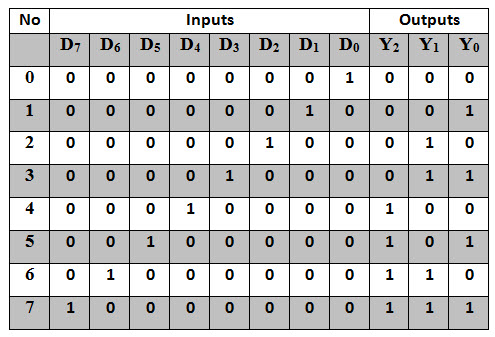


The Decimal-to-BCD Encoder This type of encoder has 10 inputs (one for each decimal digit) and four outputs (corresponding to the BCD code). Our store provides clock dividers, 4-bit ADC, phase detector, amplifiers, digital filters, and digital multiplexers.īrowse through our products and pick a solution that meets your design requirements.An encoder is a combinational logic circuit that essentially performs a “reverse” decoder function. We provide PAM4 Signal Encoders with adjustable amplitude for all levels of output. Furthermore, encoders are used in data storage circuits to convert digital data into its equivalent code, reducing the storage space.ĪDSANTEC provides a variety of digital electronic components to provide speed and accuracy with minimum susceptance to noise and distortion. Designers use encoders in transmission lines to reduce the number of required cables. The biggest advantage of encoders is the reduced number of bits. Depending on the disjunction principle, if any of these inputs are high, the output A 1 goes to the high state. Simply put, the OR version of Y 3 and Y 2 produces output A 1. The working of 4 to 2 encoder is represented by the following equation. The same binary combination for 2 is created when input Y 2 is at a high state and the sequence goes on. Before discussing the working of 4 to 2 encoders, let’s take a look at its block diagram and truth table.Īt any point in time, only one input can be high which produces the equivalent binary output.Īs the table suggests, when Y 1 is high, the output is represented as a binary combination of 1. Some of the commonly used encoders include:ĭesigned using the OR logic gates, these encoders are available in a variety of configurations like 4 to 2, 8 to 3, and 16 to 4 encoders.

For instance, a 4 to 2 encoder converts 4 input lines to 2 outputs by assigning them a binary code equivalent. The circuit consists of ‘2 n’ input lines that produce output at ‘n’ number of lines.

Used for the conversion of one format code to another, encoders are combinational circuits that produce an output code equivalent to input sequence. One such space-efficient solution involves the use of encoders. While conceptualizing them, designers focus on using the minimum number of transmission lines for data transfer. Digital electronics revolve around the conversion of data into different formats that are compatible with certain devices.


 0 kommentar(er)
0 kommentar(er)
